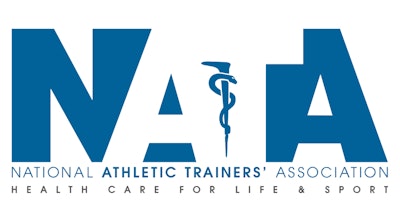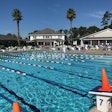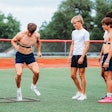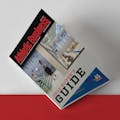
The National Athletic Trainers’ Association (NATA) hosted a virtual media briefing this afternoon and unveiled a new study published today in the Journal of Athletic Training, NATA’s scientific publication: Differences in Overuse Injuries in Gender-Comparable Sports: A Nationally Representative Sample of High School Athletes.
“Today’s forum presented an opportunity to convene a panel of interdisciplinary sports medicine experts to discuss the study findings, provide recommendations to reduce risk of injury, offer prevention interventions, address sport specialization and reinforce the importance of data collection,” said NATA President A.J. Duffy III, MS, ATC, PT.
The event took place during National Youth Sports Week. To review the full recording please click here. STUDY BACKGROUND & TOPLINE FINDINGSPrevious studies on gender differences in sports injuries have had several limitations, including using non-nationally representative samples, focusing on acute injuries or emphasizing only one sport.
- Using nationally representative data collected from the 2006-2007 to 2018-19 academic year through the High School Reporting Information Online (RIOTM), the study reported a total of 908,295 estimated overuse injuries were sustained by high school athletes who played gender-comparable sports including soccer, basketball and baseball/softball.
- Girls are more likely to sustain overuse injuries than boys: 44% of these injuries occurred in boys’ soccer, basketball, and baseball, while 56% occurred in girls’ soccer, basketball, and softball.
- Common activities associated with an overuse injury. For boys’ baseball, pitching (44%) was the most common activity associated with an overuse injury, which differed from the most common activity of throwing (32%) for girls’ softball.
- The distribution of overuse injuries across class years differs between boys and girls: in boys, the number of overuse injuries increases with class year and with girls’ sports it decreases.
NATA RECOMMENDATIONS TO REDUCE RISK OF OVERUSE INJURIES IN YOUTH SPORTS
- Proper technique and training (muscle strength, balance, body mechanics)
- Positive mental health
- Delay specializing in a single sport for as long as possible.
- One team at a time
- Participation in one sport less than eight months per year
- No more hours/week than age in years
- Two days of rest per week
- Rest and recovery time from organized sport participation
PANELISTS
The program was moderated by NATA President Duffy. Panelists included:
Study authors Christy Collins, PhD, president, Datalys Center for Sports Injury Research and Prevention (Indianapolis, IN); and Ginger Yang, PhD, MPH, principal investigator at the Center for Injury Research and Policy, Abigail Wexner Research Institute at Nationwide Children’s Hospital; professor of Pediatrics and Epidemiology at The Ohio State University (Columbus, OH)
Henry Ellis, MD, associate professor of Orthopaedics and Sports Medicine Fellowship director, UT Southwestern Medical Center; medical director of clinical research, Scottish Rite for Children (Dallas, TX); founding member and current treasurer of Pediatric Research in Sports Medicine Society; and immediate past president of the Texas Orthopedic Association
Joseph Janosky, DrPH, PT, AT, assistant professor of Athletic Training and coordinator of Clinical Education, Lasell University (Newton, MA); board member of the National Council of Youth Sports, Pediatric Research in Sports Medicine Society, CoachSafely Foundation and European Sports Medicine Associates
Shelly Jones, ATC, head athletic trainer, Aloha High School (Beaverton, OR); sports medicine advisor, Oregon School Activities Association; sports medicine advisory committee member, National Federation of State High School Associations
Christina L. Master, MD, professor of pediatrics, University of Pennsylvania Perelman School of Medicine; and co-director, Minds Matter Concussion Program, Children’s Hospital of Philadelphia
RESOURCES
- Youth Sport Specialization Safety Recommendations endorsed by AT Pro Societies:
- Overuse Injuries
- Avoiding Baseball Related Injuries
- Shin Splints and Stress Fractures
About NATA: National Athletic Trainers’ Association – Health Care for Life & SportAthletic trainers are health care professionals who specialize in the prevention, diagnosis, treatment and rehabilitation of injuries and sport-related illnesses. They prevent and treat chronic musculoskeletal injuries from sports, physical and occupational activity, and provide immediate care for acute injuries. Athletic trainers offer a continuum of care that is unparalleled in health care. The National Athletic Trainers' Association represents and supports 40,000 members of the athletic training profession. Visit nata.org for more information.






























